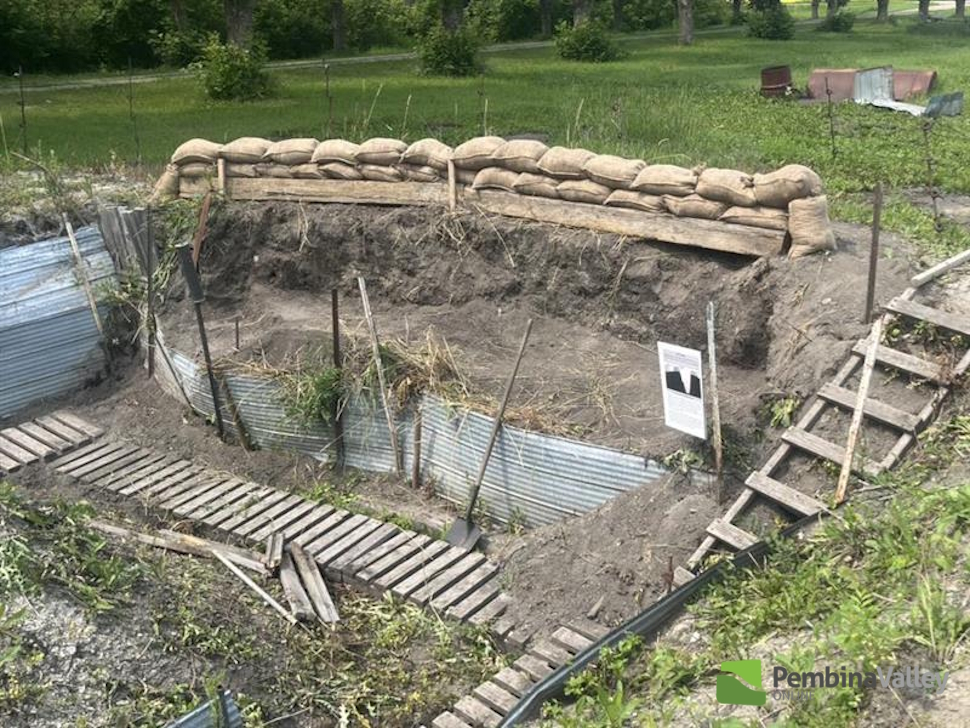Visitors will have a rare opportunity to experience the reality of trench warfare at the Manitoba World War One Museum’s "A Day in the Trenches", happening Sunday, August 10th from noon to 4 p.m. Located just west of La Riviere, the event offers a fully immersive World War I experience complete with re-enactors, original artifacts, and historically accurate trench systems.
Museum founder Bruce Tascona says the event is designed to educate and remember, not glorify. “This war actually affected everyone in small-town Manitoba,” he said. “Every town has a monument. If you were in existence prior to the First World War, chances are you lost someone, a child who never came home.”
“The soldiers didn’t have social media warning them how bad it would be. They left the safety of the trenches, crossed no man’s land, and faced an enemy just as deadly. That took immense courage.” - Bruce Tascona, Founder of the Manitoba World War 1 Museum
Trench warfare was born out of necessity
When World War I began in 1914, battles were fought in open fields with soldiers standing in lines, facing each other. “You had soldiers capable of firing 15 to 20 bullets a minute,” explained Tascona. “Now multiply that by a thousand. Add in machine guns firing 500 bullets a minute and cannons launching 10 to 12 shells a minute. Marching forward into that was devastating.”
Early in the war, one of the deadliest examples was the First Battle of Ypres, where over 5,000 young German students were killed. Tascona said the British were so accurate with their rifles that the Germans assumed every soldier had a machine gun. “It broke the heart of the soldiers,” he said. “Bravery and the land didn’t carry the day. So they went to ground. That’s how the trenches started.”
Inside the trenches: mud, misery, and morale
By the end of 1915, trench systems stretched from the Swiss border to the North Sea, crossing through Belgium, France, and Luxembourg. While they helped reduce direct fire casualties, the living conditions were often horrific.
“If the trenches weren’t drained properly, you were ankle-deep in water,” said Tascona. “And with the sinking of supply ships, they couldn’t get rubber from Malay or Brazil. That meant poor boots and trench foot.”
Sanitation was critical to survival. The museum will showcase a real World War I latrine from a Canadian training camp. “You’re not going to see a war movie where they stop to use the latrine,” he said with a laugh, “but disease could wipe out a unit if hygiene wasn’t enforced.”
Re-enactors portray soldiers from around the world
The event features living history re-enactors in full wool uniforms, accurately portraying soldiers from several nations. “We’re going to have people dressed as Austrians, Germans, U.S. Marines, French Army, and of course Canadians,” said Tascona. “And they won’t be wearing nylon. These guys wear the heavy stuff, just like in 1916.”
Displays will include kit layouts, trench structures, and even battlefield demonstrations. “These re-enactors are passionate,” Tascona added. “They love history and go to great lengths to get every detail right.”
Why World War I helmets changed everything
Helmet design is another feature of the exhibit. Visitors will see the evolution from cloth caps to the British Brodie helmet, the German Stahlhelm, and beyond. “They introduced helmets in late 1915 because the cloth caps just didn’t protect from shrapnel or rocks,” said Tascona. “The Brodie reduced head wounds by 80 percent. That was huge.”
The helmets were not bulletproof, though. “They were designed for deflection, for debris falling in the trenches,” he said. “We’ve even got helmets with bullet holes to prove it.”
Courage in no man’s land
For Tascona, one of the most powerful parts of the World War I experience was the courage it took to go “over the top.” In some places, opposing trenches were separated by just 25 yards. “You could hear the other side laughing,” he said. “Sometimes there was a live-and-let-live attitude just to avoid the grenades.”
He added, “The soldiers didn’t have social media warning them how bad it would be. They left the safety of the trenches, crossed no man’s land, and faced an enemy just as deadly. That took immense courage.”

Canadian soldiers gained legendary status
One key point the museum emphasizes is the role of Canadian troops in World War I. Known for their effectiveness and professionalism, they earned global respect. “The Germans classified Canadians as shock troops,” Tascona said. “They knew if the Canadians were in front of them, it was going to be bad. And they were all volunteers. That mattered.”
He added that near the end of the war, Canadian soldiers were often given the most difficult missions. “They turned into a very professional army,” he said. “And they had heart.”
Why young people should experience this
Tascona hopes parents and educators bring young people to the event. “We still practice remembrance on November 11th, but I think we need to remember every day,” he said. “Bring young people. Let them walk through history. They’ll see what life was really like from 1914 to 1918.”
The museum regularly hosts school groups and works closely with educators to share this often overlooked chapter of Canadian history. “It’s not about glorifying,” Tascona emphasized. “It’s about understanding what was lost, and why it matters today.”
If you go:
-
What: A Day in the Trenches – Living History Event
-
When: Sunday, August 10th, 12:00 p.m. to 4:00 p.m.
-
Where: Manitoba World War One Museum – 3 miles west of La Riviere, 1 mile north of Hwy 3 (Road 58 at 16N)
-
Details: Experience recreated trench systems, soldier kit displays, interactive demonstrations, and more
